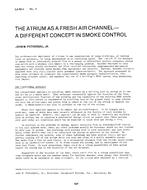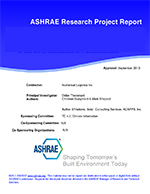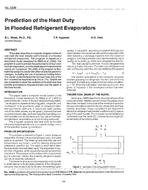A study was conducted to quantify the effects of variation in the parameters used to design a single-pipe, horizontal, ground-coupled heat pump (GCHP) system. A computer model was built to predict the performance and energy consumption of a 3-ton residential heat pump system and the results were compared to field data of two homes in Oklahoma. An economic analysis was also conducted. The main results of this study showed. – 1. The economically optimum length of pipe to bury at any depth is between 1000 ft and 1750ft (305m and 533m). Due to maximum or minimum design coil temperature limits, however, certain pipe lengths may not be acceptable in this range. 2. There is no economic advantage to justify placing the ground coil deeper than 4ft (1.2m). 3. There is no economic penalty for placing an extra 300ft (91m) in the ground coil beyond the calculated minimum coil length. 4. Soil conductivity does not significantly affect the life-cycle cost of owning and operating a GCHP system as long as the system is designed not to exceed reasonable maximum and minimum ground coil temperatures.
KEYWORDS: heat pumps, soil heat pumps, USA, designing, costs, payback period, housing, pipes.
Citation: ASHRAE Transactions, vol.96, pt. 1, Atlanta, 1990
Product Details
- Published:
- 1990
- Number of Pages:
- 9
- File Size:
- 1 file , 1.1 MB
- Product Code(s):
- D-18449


